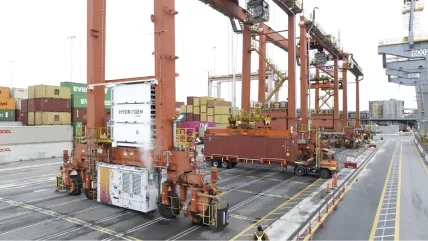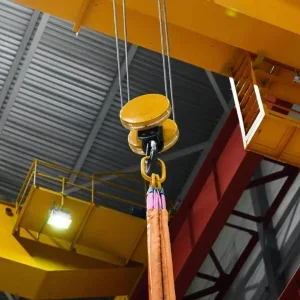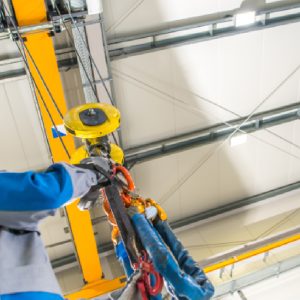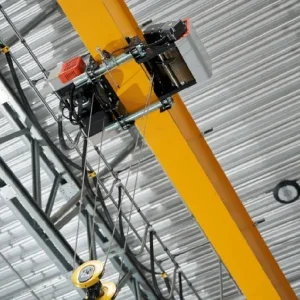
DP World has completed initial tests of a hydrogen fuel cell rubber-tired gantry (RTG) crane at the Port of Vancouver, marking progress in reducing carbon emissions from its port operations.
The RTG crane is now undergoing field testing as part of DP World’s evaluation of electrifying its global fleet of 1,500 RTG cranes.
RTG cranes, traditionally powered by diesel, are crucial for cargo handling but significantly contribute to greenhouse gas emissions. At the Vancouver terminal, 19 RTG cranes account for half of the diesel consumption and produce over 4,200 tonnes of CO2 annually. The introduction of hydrogen technology aims to decrease or eliminate this environmental impact.
DP World Canada CEO Doug Smith said: “As one of the world’s foremost port and terminal operators, we are dedicated to advancing sustainable practices that will drive industry-wide change.
“This pilot not only marks an important step in DP World’s commitment to decarbonizing its operations, but it also sets a new benchmark in sustainable logistics. Real-world testing ensures our solutions are reliable and effective and could open the door to electrifying our global fleet of RTGs.”
The pilot project, initiated by DP World in October 2023, involved retrofitting a diesel RTG with a Hydrogen-Electric Generator (HEG), a battery energy storage system, a hydrogen storage module, regenerative energy capture, and integrated control and safety systems.
The project has now entered a second phase, involving a one-year field trial to monitor performance metrics such as hydrogen consumption, energy generation, and regenerative energy capture rates.
This data will enable the team to compare the zero-emission hydrogen electric RTG with a traditional diesel-powered RTG in terms of productivity, reliability, maintainability, costs, and environmental benefits.
DP World collaborated with TYCROP Manufacturing, H2 Portable, and HTEC for this initiative. H2 Portable and TYCROP developed a Hydrogen-Electric Generator (HEG) using a dual fuel cell and battery energy storage system, while HTEC supplied the hydrogen storage system and hydrogen supply.
The RTG crane operates by storing up to 135kg of compressed gaseous hydrogen in 15 pressurised tanks. The hydrogen is supplied to the fuel cell system, which charges a high-voltage battery that powers the crane’s electric drive. The bidirectional power system recovers energy when lowering containers, reducing energy demand and improving operational efficiency.
If the field trial proves successful, DP World may convert its 25 diesel-powered RTG cranes in Vancouver and Prince Rupert to meet its zero-emissions goals. Additionally, plans are underway to trial an electric terminal tractor at the Port of Vancouver, and the company is acquiring a fleet of electric vehicles.






